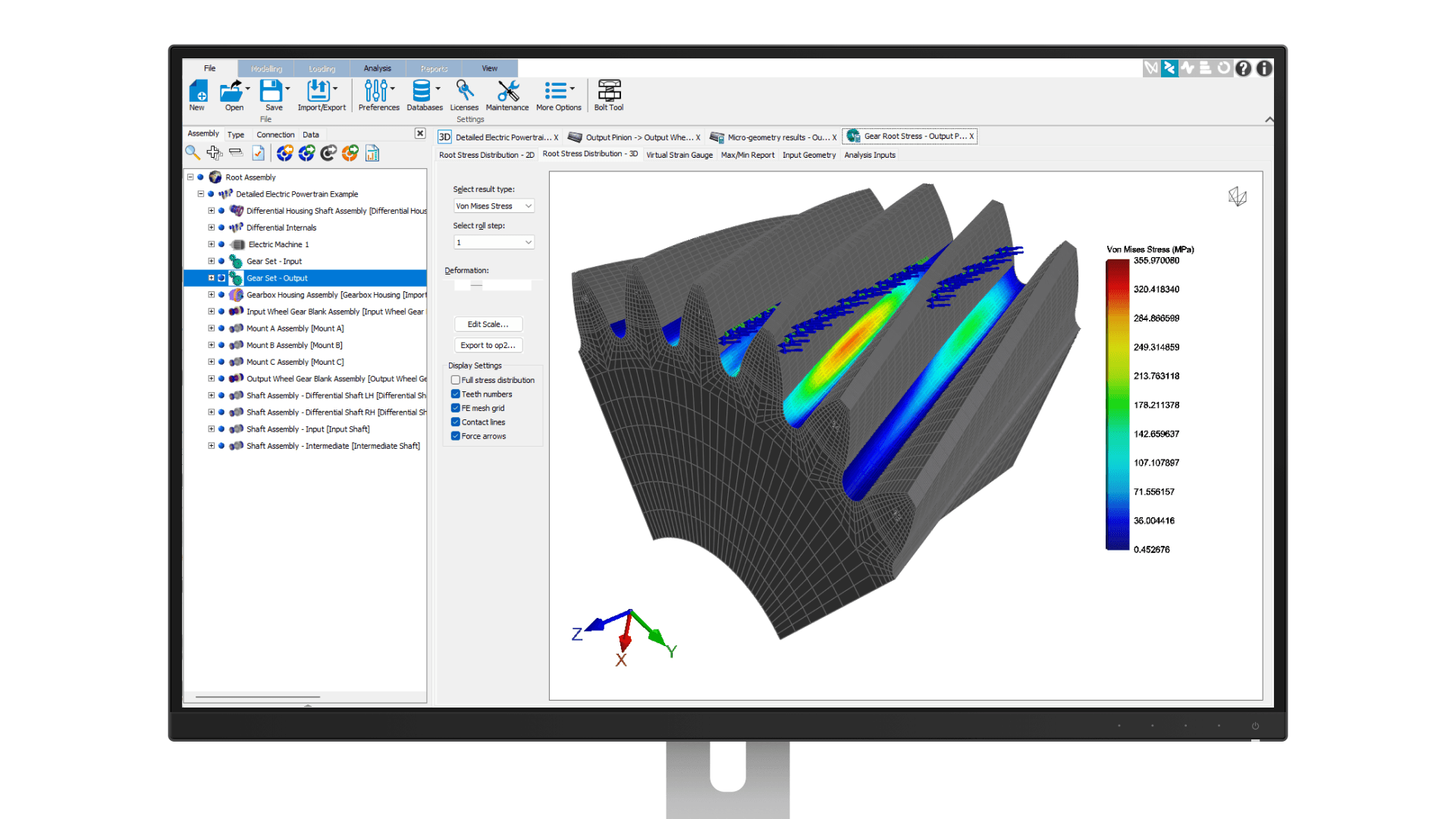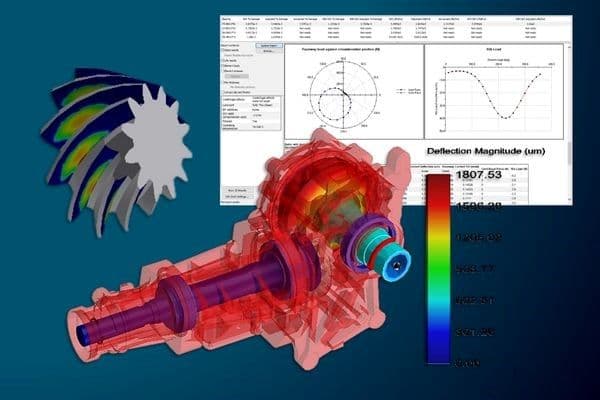© 2025 Hexagon AB and/or its subsidiaries
© 2025 Hexagon AB and/or its subsidiaries

An integrated toolset for ePowertrain engineering from concept exploration to virtual product sign-off.
Part of the Romax toolset, Romax Enduro offers fast and easy modelling, detailed system-level structural simulation, state of the art component rating and advanced gear and spline analysis for powertrain durability design and optimisation. With Enduro, powertrain engineers and gear designers can design durable and robust geared electro-mechanical systems.
Benefits And Features
Multi-fidelity drivetrain structural and durability analysis and optimization

Drivetrain structural analysis
Validated, full system drivetrain structural analysis, combining state-of-the-art component contact models with stress-based life calculations.

Assess load-dependent system misalignments
Effective gear design and optimization that accounts for load-dependent system misalignments.

Highly efficient workflows
Utilize interfaces to CAD, FEA and other CAE tools, for efficient workflows and robust exchange of design data, alongside parametric studies and batch running for optimization and automation.
Training and Resources
Connect and collaborate with your peers and experts
The Nexus Community provides you with excellent peer forums and the opportunity to learn from thousands of others in your industry. Currently, hundreds of peer forums waiting for you to explore into. Discover best practices and get the answers you need to succeed. Register for Nexus to get full access the Community forums.
Our team is ready to help
Our technical support teams are on hand to answer your questions. Contact us through our online form and we will get right back to you.
You might be interested in...
Related products

An integrated toolset for ePowertrain engineering from concept exploration to virtual product sign-off.
Part of the Romax toolset, Romax Enduro offers fast and easy modelling, detailed system-level structural simulation, state of the art component rating and advanced gear and spline analysis for powertrain durability design and optimisation. With Enduro, powertrain engineers and gear designers can design durable and robust geared electro-mechanical systems.
Take advantage of various learning opportunities
Visit the Nexus Academy Catalog for a complete list of educational content. You can enroll for training, complete self-paced courses, register for distance learning, classroom instruction, live training events, and download or print your completion certificate.

Dive into our documentation to explore the full potential of our product offerings
Your ultimate resource for practical guidance and support. Here you’ll find a wealth of step-by-step how-to guides, detailed tutorials, and handy tips and tricks. Whether you’re troubleshooting an issue or looking for ways to optimize your use of our products, our Documentation Center provides clear and concise information to help you get the most out of your experience.

Expand your knowledge
Our Knowledge Base is your go-to hub for in-depth insights and valuable information. Explore a rich collection of articles and detailed white papers crafted to provide you with the knowledge you need to excel. From industry trends to expert analyses, our Knowledge Base is designed to keep you informed and empowered with the latest and most relevant content.

Downloads are only available on the desktop version. Please access our site from a desktop to download.
Get the most out of our resources.
For the latest updates, resources, and software, please visit our Download Center
Click the link to access the files you need today
Frequently Asked Questions
To get accurate deflections and misalignments, it is essential to consider a fully flexible and coupled system. In some cases, like planetary gear arrangements, it is also important to consider load sharing between all gear meshes.
Romax Enduro uses a combination of analytical, numerical and empirical methods, fine-tuned to be as efficient as possible at solving specific rotating machinery problems, which gives significant benefits over general methods. The models have been validated repeatedly throughout the years, including correlations with FEA and physical tests.
We recommend you follow our tutorial packs. The link to the latest tutorials can be found on the Romax Support Homepage.
Detailed Technotes on all new features are available on the PDC. You can find the Latest documentation link on the Romax Support Homepage.
Please see here.
Please see here.
Please see here.
Please see here.